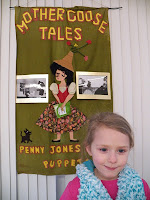It is well known that…
…reduced class size increases
students’ achievement.
Let me present you some American research
supporting the above statement.
Interest in class size in America blossomed
in the late 1970s. Since then there were two big studies presented around the
country.
First study - Gene Glass and Mary Lee Smith
consolidated prior years of class-size research using meta-analysis to
calculate the effects of many studies and pool the results. Indiana 's statewide Prime Time project (1981)
initially reduced class size in grades 1 and 2, and later expanded to include
reductions in kindergarten and grade 3 reductions that could involve teacher
aides, a PTR intervention. Texas
passed House Bill (H.B.) 72 in 1984 to limit class size in grades K-2 to 22 and
added grades 3 and 4 and a 20 student limit in 1986.
The reasons for reducing class sizes included providing better
instruction, more individual attention to students, and accommodating the
growing diversity in public schooling.
To read the whole report go to:
Second study - Tennessee
From a review of this research,
we can scientifically document several important findings about reduced class
size:
- Smaller
classes in the early grades (K-3) can boost student academic achievement;
- A class size
of no more than 18 students per teacher is required to produce the
greatest benefits;
- A program
spanning grades K-3 will produce more benefits than a program that reaches
students in only one or two of the primary grades;
- Minority
and low-income students show even greater gains when placed in small
classes in the primary grades;
- The experience
and preparation of teachers is a critical factor in the success or failure
of class size reduction programs;
- Reducing class
size will have little effect without enough classrooms and well-qualified
teachers; and
- Supports, such
as professional development for teachers and a rigorous curriculum,
enhance the effect of reduced class size on academic achievement.
The above findings come form:
To read more go to:
http://www.princeton.edu/futureofchildren/publications/docs/05_02_08.pdf
http://www.aypf.org/publications/rmaa/pdfs/ClassSizeSTAR.pdf
To read about class sizes around
the world go to:

























































